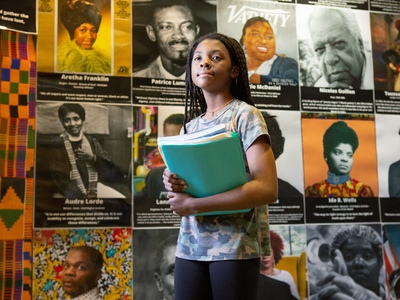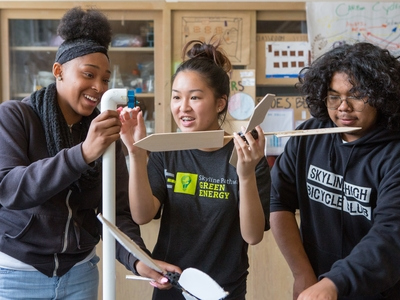New Designs for School
The Collaborative Learning Commons: Physical Space and Educational Philosophy
Topics

We’ve all had the experience of truly purposeful, authentic learning and know how valuable it is. Educators are taking the best of what we know about learning, student support, effective instruction, and interpersonal skill-building to completely reimagine schools so that students experience that kind of purposeful learning all day, every day.
A large, open space for collaboration, creativity, and critical thinking in their school helps prepare students for success in today's world.
Innovations in teaching and learning have had little impact on modern space planning and school architecture. We know that students and teachers do better when they have variety, flexibility, and comfort in their environment. This series examines how next generation learning spaces impact the learning experience for students and their teachers. If you have the opportunity to design a new school building or renovate an existing building, or if you are interested in using space better in your school, this series can help ensure that the physical spaces in your building promote the skills students need to thrive and contribute to an ever-changing global society.
The Collaborative Learning Commons is much more than just a physical space, it’s an educational philosophy. It transforms the way students learn by promoting collaboration, creativity, and critical thinking. With its focus on student engagement, flexible design, and integration of technology, these spaces reflect the needs of modern learners. By facilitating collaboration across disciplines and creating opportunities for hands-on, real-world learning, the collaborative learning commons prepares students for success in an interconnected, fast-evolving world.

Credit: westock on Freepik
Collaborative learning commons can be used for Active Project-Based Learning (APBL) which is a process that allows students to engage in solving authentic, real-world opportunities. With research, producing a final product, and learners sharing their conclusions with classmates, students can successfully complete their discovery process. APBL activities can include many learning classifications where students manage their own learning process. These activities may include large group project initiatives with authentic, real-world companies as collaborative team members, small group investigative teams with mock-up examples, and several critical evaluations and revision submissions. The commons should include movable, flexible furniture and mobile flat-panel screens.
The collaborative learning commons is designed for flexible group sizes from large to small that engage in a variety of collaborative activities. It is a multidimensional, informal learning environment with access to storage, sink, learning materials, power, Internet, and hard and soft flexible seating that includes both standing and sitting options. Ideally, it has abundant natural daylighting that positively stimulates the students throughout the day. Variable wayfinding, inspirational murals, and artificial lighting can define its zones. The space can be filled with student worktables, writing walls, flat panel technology screens (both fixed and movable), and displays for two-dimensional and three-dimensional work produced by students. When it is centrally located in an academic cluster with classroom studios around it, utilizing full transparency between the learning commons and classroom learning studios, everyone can see learning happening and teachers can effectively supervise all activities.
A collaborative learning commons in schools is a dynamic, flexible space designed to support active, student-centered learning. It’s not just a place for studying or accessing resources, but a vibrant environment where students, teachers, and even community members can engage in collaboration, creativity, and problem-solving. These spaces encourage group work, sharing of ideas, and interdisciplinary learning, fostering skills that are essential for today’s rapidly changing world.
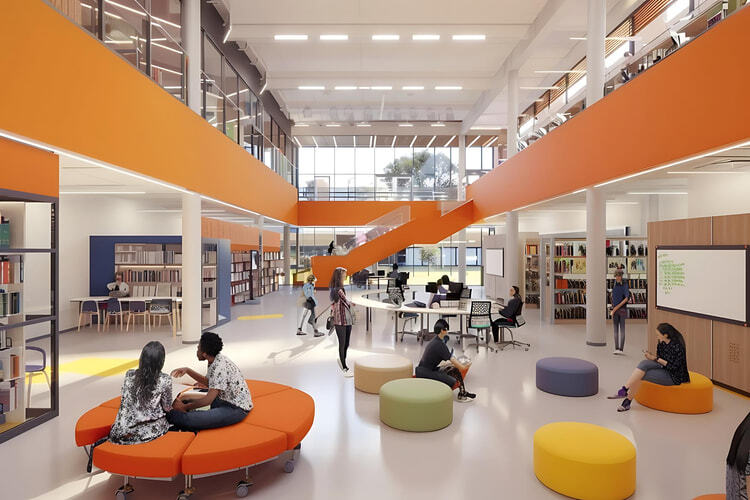
Credit: hamjisun on Freepik
A. Flexible Design for Varied Learning Activities
The layout of a collaborative learning commons is often open and adaptable, providing a variety of seating arrangements such as comfortable lounges, group tables, whiteboards, and media stations. This flexibility supports different types of learning activities, from individual research to team projects, or even creative brainstorming sessions. Unlike traditional classrooms with fixed desks and rows, the learning commons encourages movement and interaction.
B. Technology Integration
In today’s world, technology plays a central role in education. A collaborative learning commons is typically equipped with modern technological tools, such as computers, tablets, interactive whiteboards, and audio-visual equipment. These tools not only help students access information but also enable collaborative digital projects, research, and communication across distances. The use of tech encourages students to engage with digital media, coding, multimedia production, and other 21st century skills.
C. Student-Centered Learning
One of the hallmarks of a collaborative learning commons is its focus on student-driven learning. The space is designed to support various learning styles and encourages students to take ownership of their educational experiences. In contrast to the teacher-led, passive model of learning, the commons provide students with the freedom to explore topics of interest, work on projects, and ask questions in a less formal environment. This promotes active engagement and critical thinking.
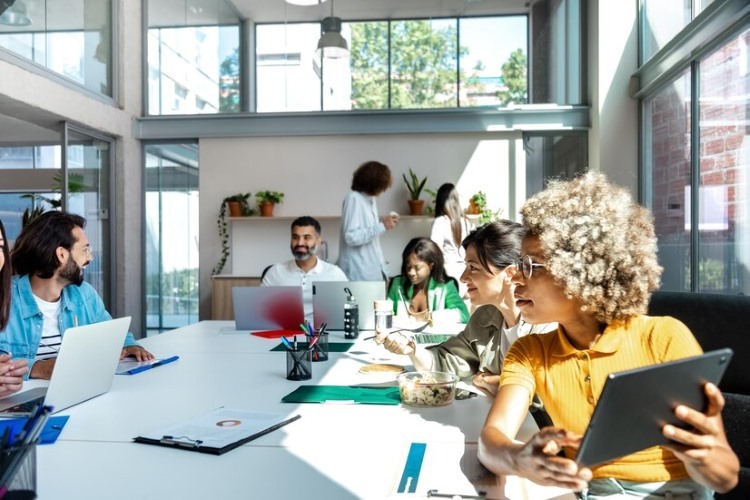
Credit: hoverstock on Freepik
D. Collaboration Across Disciplines
The collaborative learning commons breaks down the boundaries of individual subject areas by allowing students to work across disciplines. It encourages interdisciplinary projects where students can integrate knowledge from different subjects. For example, a group might collaborate on a project that combines science research, mathematical data analysis, and creative writing. The commons facilitate these types of interactions, promoting a holistic approach to learning.
E. Teacher and Peer Collaboration
Teachers also play an important role in the learning commons, but not in a traditional “front of the class” manner. They act as facilitators, helping guide students through their projects and supporting inquiry-based learning. Teachers can collaborate with other faculty members as well, creating cross-curricular connections and co-teaching opportunities. Peer collaboration is equally valuable—students often work together, exchange ideas, and help each other solve problems, reinforcing the concept of learning as a social activity.
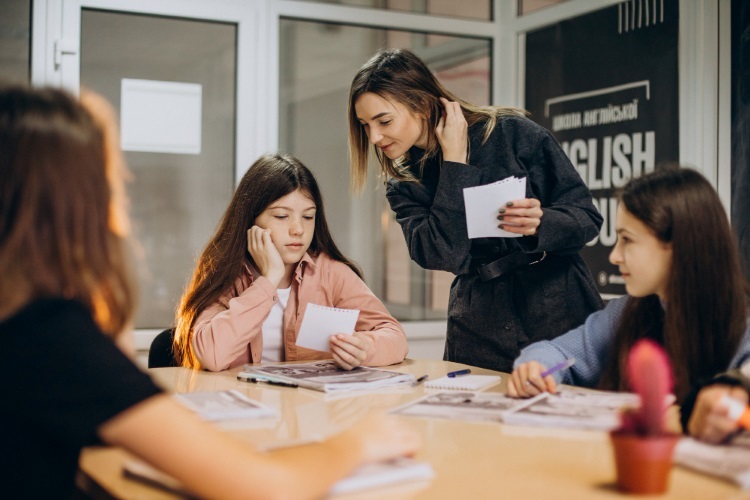
Credit: senivpetro on Freepik
F. Access to Resources and Expertise
A learning commons often includes a library or resource area with books, research materials, and online databases. However, it is much more than just a quiet place for reading. It also includes access to specialized resources such as digital media labs, 3D printers, and audio recording equipment. These tools allow students to bring their ideas to life, whether through creating podcasts, videos, or interactive websites. Additionally, specialists such as librarians, tech experts, or tutors may be available for “pull-out” to provide extra support.
G. Fostering Creativity and Innovation
Beyond traditional learning activities, collaborative learning commons encourage creativity and innovation. Many commons spaces have areas for art, design, or digital production. Students can brainstorm, sketch, prototype, or experiment with new ideas. This fosters a mindset of innovation and problem-solving, which is invaluable in the modern world, where creativity and adaptability are highly sought after skills.
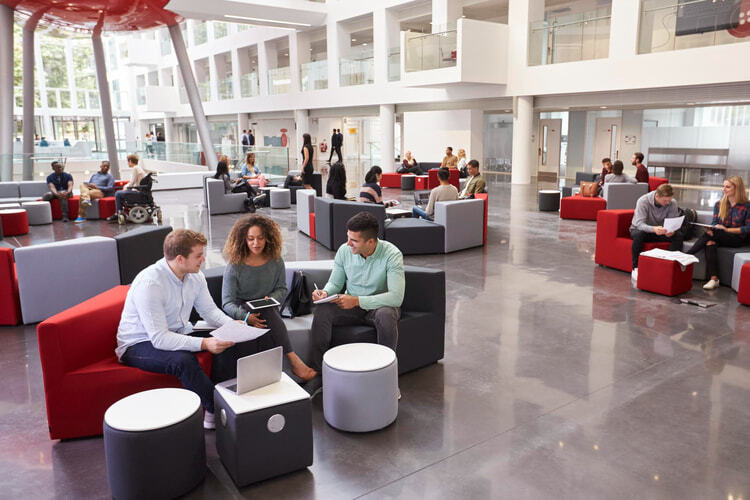
Credit: korrawinj on Freepik
H. Building a Sense of Community
These spaces also nurture a strong sense of community within the school. Students from different grades, backgrounds, and abilities interact in collaborative spaces, helping to bridge social divides. Whether it’s a shared project, a club meeting, or informal conversations during study breaks, the learning commons become places where students form connections and friendships that transcend the classroom. This sense of belonging can increase motivation and engagement.
I. Support for Diverse Learners
A collaborative learning commons is also designed to be inclusive, offering support for diverse learners. The flexible environment can be adjusted to meet various needs, whether it's quiet areas for focused study, spaces for hands-on learning, or group areas for discussions. Students with different learning preferences—whether auditory, visual, or kinesthetic—can find a spot that suits them. Additionally, the use of technology can help students with special learning needs by providing assistive tools like screen readers, speech-to-text software, or audio recordings.


